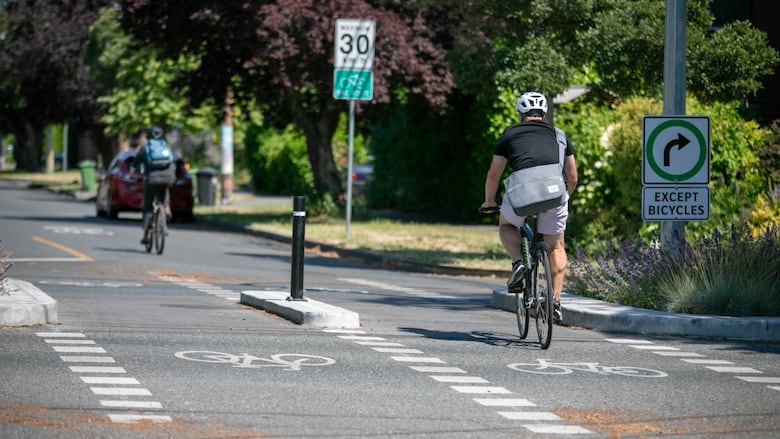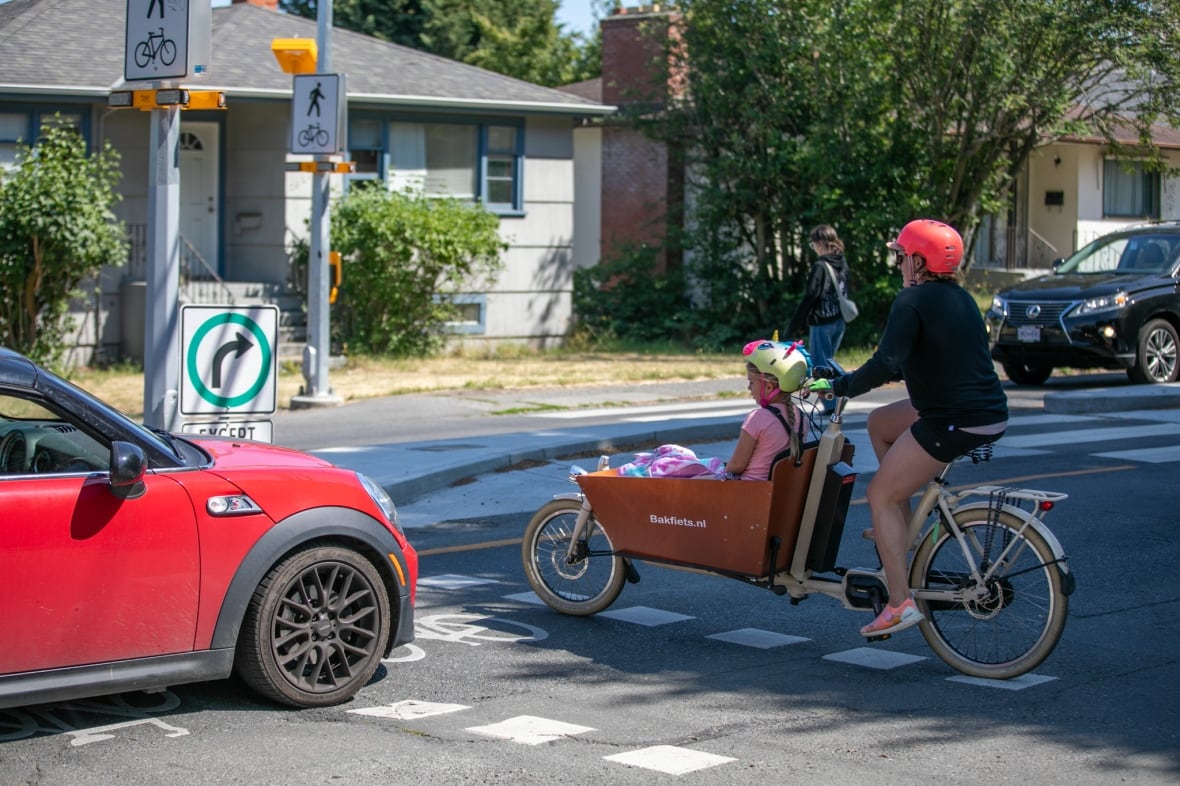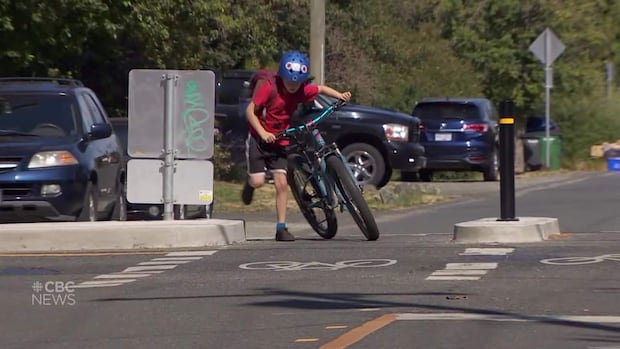Do you know how to use an 'elephant's feet' crosswalk?
Drivers approaching a crosswalk inside dotted lines should be prepared to stop for cyclists

Have you come across a crosswalk marked by dotted lines in your community?
Used in municipalities across B.C., the so-called elephant's feet crosswalks indicate a designated crossing for both pedestrians and cyclists between two lines of white squares that are supposed to resemble the footprints on an elephant.
The dotted white lines signal to bikers they can remain on their bike while crossing the road, as opposed to getting off and walking the bike as required in a standard crosswalk marked with large white stripes, also called zebra crossings.
For the City of Victoria, elephant's feet crosswalks are about cyclist safety, according to the city's transportation planning manager Sarah Webb.
Seen along the city's all-ages and all-abilities cycling route, they are part of a system that aims to make riding more accessible in the city.
WATCH | How to use the crosswalk:
"We not only see more people riding, we see people who are younger, older, traveling with children, or new to riding," said Webb.
Elephant's feet crosswalks can be combined with a regular pedestrian zebra crossings or can be a separate lane beside the pedestrian crossing. They often have a bicycle symbol stencilled within them.
Webb says they are also used in some intersections with traffic lights to guide bikes on the path they are supposed to follow.

What are the rules?
Just like pedestrians, cyclists should stop and look both ways to ensure the road is clear or cars have stopped before crossing.
Then, they should proceed slowly, yielding to pedestrians using the crosswalk. Cyclists do not have to dismount.
Webb says motorists should keep an eye out for these crossings, and be prepared to yield to anyone — pedestrian or cyclist — using the crossing.

"Things are changing as we are looking at different ways to move people safely, and accommodate more people walking, cycling, and rolling across our cities," said Webb.
"Both motorists and cyclists should be aware of their roles and responsibilities, and the rules of the road."
At some busy intersections, the pedestrian or cyclist can push a button to trigger a flashing light, signaling to cars that the crosswalk is in use.
Webb says the purpose of elephant's feet crosswalks is to promote different types of transportation, while reducing conflicts between motorists and cyclists.
